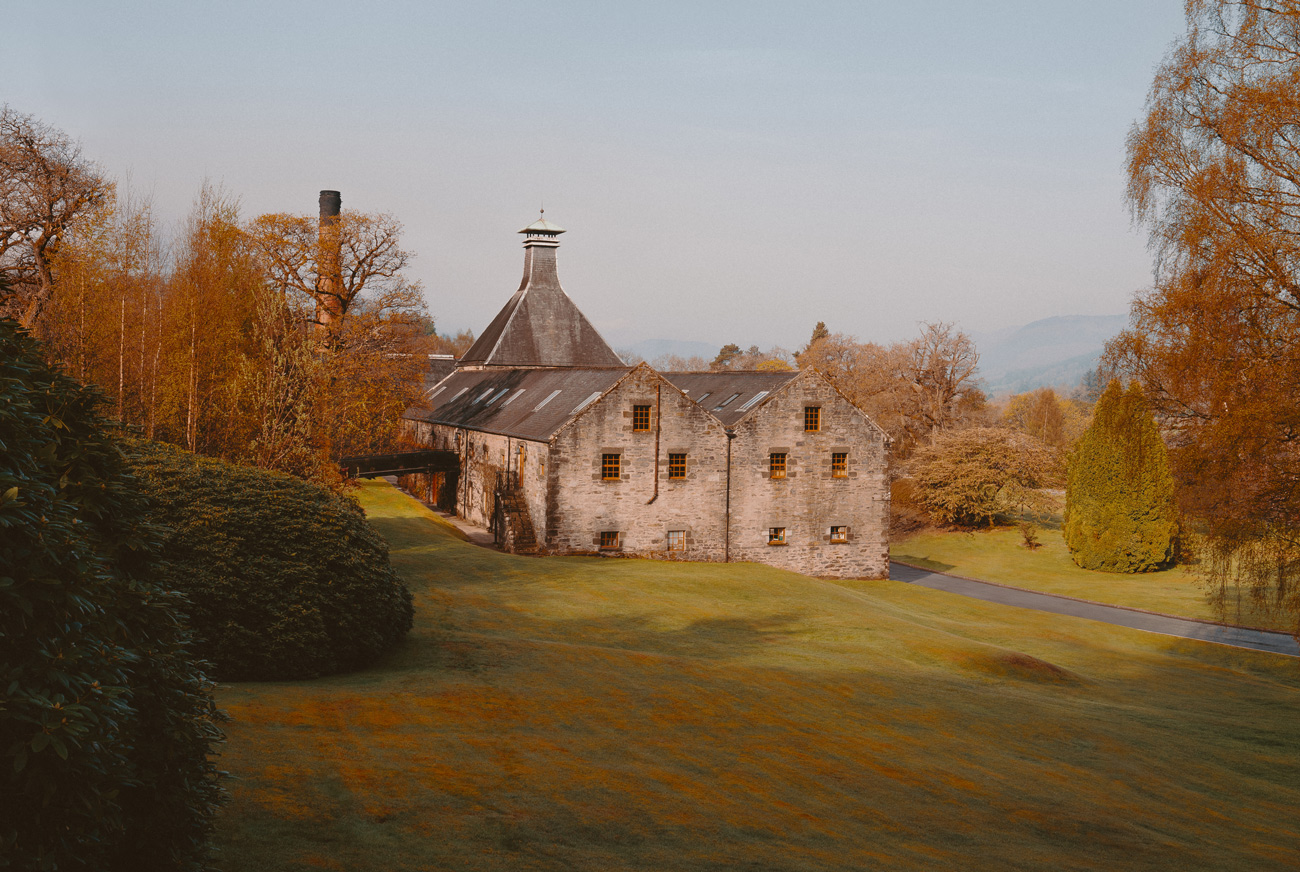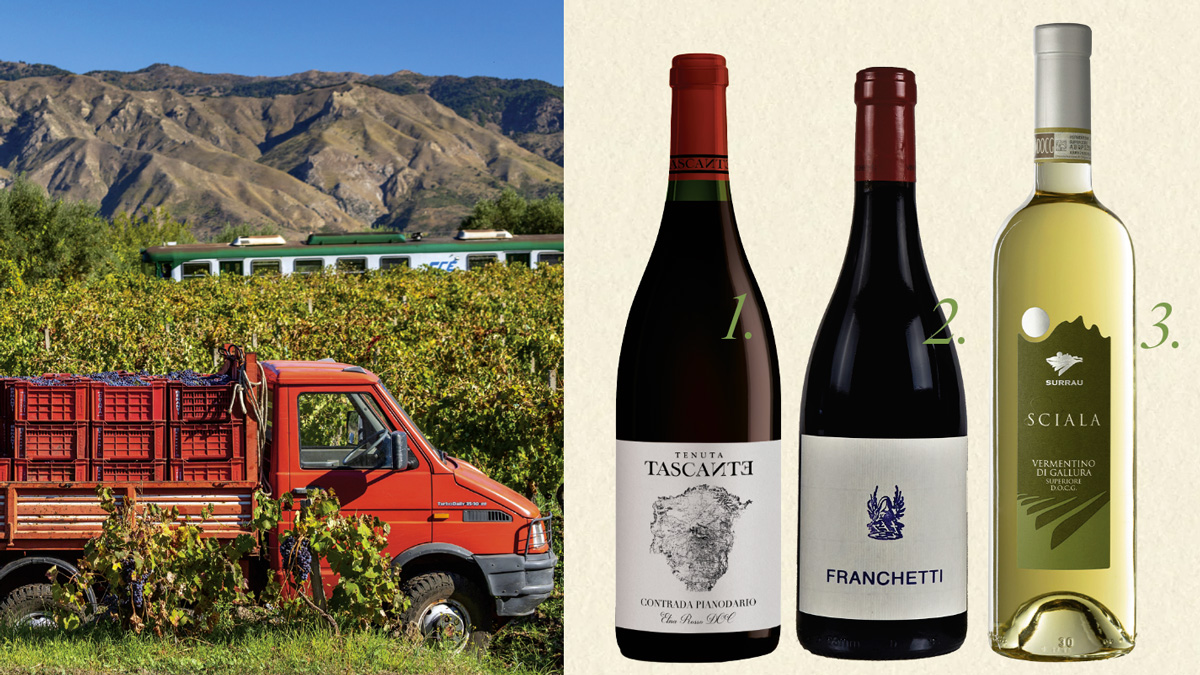
icily is where it all started, or so the story goes. The Mycenaean Greeks arrived on the island around 1000 BC, bringing with them viticultural techniques and an established tradition of winemaking. As Italians are prone to do (pasta, anyone?), the Sicilians adopted the cultural practice—and perfected it.
Today, there isn’t a region in Italy without a tradition of viticulture, says Brian Larky, founder of the Italian-wine importer Dalla Terra Winery Direct. Larky, the former winemaker at Ca’ del Bosco in Lombardy, estimates that Italy has 600 varietals of grapes growing across the country and thousands of individual brands.
Tuscany is undoubtedly the most established player on the wine scene, with several standout appellations within the greater region. Still, many of Italy’s most coveted wines come from other parts of the country. For vino-minded visitors, Italy’s many regions, varietals, and vintners can be overwhelming, so we asked Larky to pick four of his favorite spots—and the wineries he likes to visit in each. His selections (some in Dalla Terra’s portfolio) present a variety of enticing options where imbibing is only one of the draws.
“Brunello di Montalcino is one of the most recognized and collectible wines in the world,” Larky says. “They’re bold and age beautifully.”
In this Tuscan appellation with more than 200 wineries, Larky gives top billing to Siro Pacenti, where owner and winemaker Giancarlo Pacenti is known for his meticulous attention to detail, in both the vineyards and the cellars. “This is a small winery, and the draw of a visit is the personal attention you get,” Larky says. “There are no group tastings, only private experiences that can last hours and are sometimes led by Pacenti himself.”
Conti Costanti, a label whose namesake family’s roots in the region date to the 15th century, is another must for its complex, tannic red wines and spectacular location. “The estate is set on a hillside and stunning, and you get the most panoramic views from Montalcino to Siena,” Larky says.
For a truly luxurious tasting experience, don’t miss Castiglion del Bosco, a centuries-old estate restored by Massimo Ferragamo of the Ferragamo fashion family. In addition to the winery, the property, set in the Val d’Orcia hills outside the town of Montalcino, features a Rosewood hotel, a Tom Weiskopf–designed golf course, a spa, a helipad, and a restaurant with two Michelin stars. “Castiglion del Bosco has some of the most expansive vineyard holdings in Brunello, yielding wines that are complex, diverse, and consistent,” Larky says.
Located in the Dolomites, Italy’s northernmost viticultural region is known for its crisp wines. “There’s a good mix of red and white wines produced from single varietals,” Larky says. “You’ll rarely find blends.” The champion grapes here are Pinot Grigio, Pinot Bianco, and Sauvignon Blanc.
Larky points first to Alois Lageder, a regional leader in biodynamic farming. Founded in 1823 and still run six generations later by the Lageder family, the estate offers a lineup of summer concerts and an excellent restaurant serving local specialties. If Larky had to choose one wine from the more than two dozen in the portfolio, he would go for the Löwengang Chardonnay, a full-bodied, rich expression in which Burgundy meets the Alps.
Larky also recommends cooperatives, which he says produce some of the best wines in Alto Adige. At Cantina Terlano, the Sauvignon Quarz and the Lagrein Porphyr (made from the red Lagrein grape) are the wines to try. “They’re mineral-driven and fresh,” Larky says.
Another co-op is Abbazia di Novacella, an abbey with a wine-production history dating to 1142. “They grow a white grape called Kerner that’s the base for wines with peach and apricot notes and a mineral finish,” Larky says. “They’re gorgeous to enjoy with any whitefish or summer salad.”

Etna
Home of raw volcanic vineyards and a culture with North African, Greek, and Spanish influences, Sicily’s Etna region is the current wine-world darling. “This is the area everyone is buzzing about,” Larky says. “The wines are akin to the finesse and structure in Barolo and Burgundy and include many notable reds and whites.”
The location of Tenuta Tascante, on the north slope of Mount Etna, lends the estate’s red and white wines a fine tannic finish and aging potential. “They are leaders in sustainability and respect the land in their farming practices,” Larky says.
Vini Franchetti Passopisciaro, founded by the late Andrea Franchetti, is a pioneer in Mount Etna winemaking, according to Larky. “Their high-altitude vineyards set the tone for the region and yield wines with higher acidity,” he says. “They’re very food-friendly as a result, especially the Franchetti, a red made with Nerello Mascalese grapes.”
The Etna trio caps off with Benanti, a producer known for its single-vineyard labels. The Rovittello Particella No. 341, crafted with Nerello Cappuccio and Nerello Mascalese grapes, is perhaps the portfolio’s most collectible wine, one that Larky recommends pairing with an aged cheese or meat.
Sardinia is a relatively new and small region for wine production, but it’s highly sought after for its “superb wines that imbue the saline freshness from the Mediterranean Sea,” says Larky. “Sardinia is a paradise to explore when it comes to wines.”
He points oenophiles to Surrau, a family-owned producer located in northern Sardinia’s Gallura region that makes spectacular Vermentino whites and Cannonau reds. The winery features a state-of-the-art cellar, an exceptional production team, and a restaurant that serves fresh seafood dishes that perfectly complement the wines.
Larky also suggests Argiolas in southern Sardinia. Owned and run by the Argiolas family, the winery has put the island’s wine scene on the global map. “They make reds and whites but are known for the former,” Larky says. “If I could, I would drink Turriga, made with an indigenous Cannonau grape, any night of the week. It doesn’t hold back in its fruit notes and structure.”
Follow Us On


| Cookie | Duration | Description |
|---|---|---|
| cookielawinfo-checkbox-analytics | 11 months | This cookie is set by GDPR Cookie Consent plugin. The cookie is used to store the user consent for the cookies in the category "Analytics". |
| cookielawinfo-checkbox-functional | 11 months | The cookie is set by GDPR cookie consent to record the user consent for the cookies in the category "Functional". |
| cookielawinfo-checkbox-necessary | 11 months | This cookie is set by GDPR Cookie Consent plugin. The cookies is used to store the user consent for the cookies in the category "Necessary". |
| cookielawinfo-checkbox-others | 11 months | This cookie is set by GDPR Cookie Consent plugin. The cookie is used to store the user consent for the cookies in the category "Other. |
| cookielawinfo-checkbox-performance | 11 months | This cookie is set by GDPR Cookie Consent plugin. The cookie is used to store the user consent for the cookies in the category "Performance". |
| viewed_cookie_policy | 11 months | The cookie is set by the GDPR Cookie Consent plugin and is used to store whether or not user has consented to the use of cookies. It does not store any personal data. |